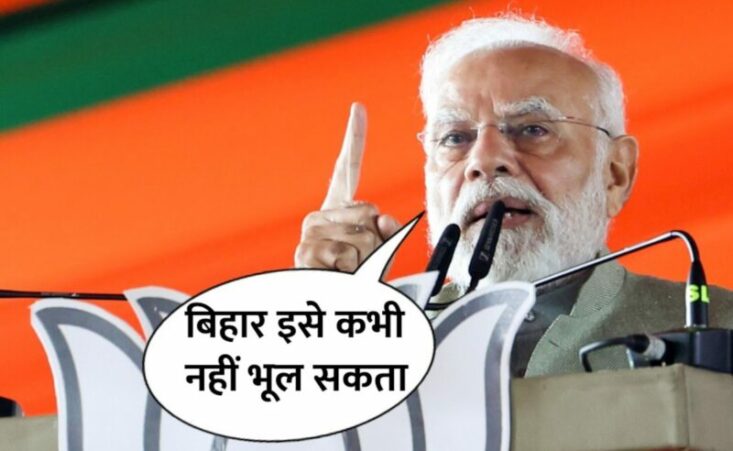
Twenty-four years after the horrific kidnapping and murder of five-year-old Golu, his father Ratan Singh still lives with the same grief. His voice trembles as he recalls the day that changed his family forever. “I should never have gone to the police,” he says quietly. “Maybe my son would still be alive. His body was found in five pieces. Even today, that memory haunts me.”
The brutal murder of little Golu, whose real name was Gautam, once symbolized the deep lawlessness that gripped Bihar in the early 2000s. The case has resurfaced after Prime Minister Narendra Modi mentioned it during his Muzaffarpur rally this week, while criticizing the Lalu Prasad Yadav-led RJD government for the state’s past record on crime and governance.
A Tragedy That Shook Bihar
For Ratan Singh and his wife Pramila, the Prime Minister’s reference reopened a wound that never healed. “He was talking about Golu,” Ratan told his wife as they watched the rally on television. “The memories came rushing back — the screams, the helplessness, and the police’s failure to act.”
It was an ordinary morning on September 20, 2001, in Muzaffarpur. Ratan, then a clerk at Punjab National Bank, sent his three children — Golu and his two sisters — to school in a rickshaw as usual. As the vehicle reached Jail Road, a white Maruti van stopped abruptly. Armed men jumped out, snatched the boy, and sped away, leaving his sisters crying for help.
Ratan rushed to Mithanpura police station to file a complaint. But the police investigation was slow and careless. Even after ransom calls, no significant progress was made. Days passed in hopeless waiting.
The Day the City Erupted
On September 25, Golu’s mutilated body was discovered in Madhopur Chaur under Hathauri police station limits. The child had been brutally killed. “I recognized him from his clothes and bracelet,” recalls Ratan Singh. “His face was gone, his body unrecognizable. My son was no more.”
The discovery sent shockwaves across Muzaffarpur. The next day, thousands took to the streets. Nearly one lakh residents protested against police negligence and rising crime. What began as grief turned into anger. Police stations were attacked, vehicles were torched, and government buildings were set on fire.
The police opened fire to control the mob, killing eleven people, including a young boy. Curfew was imposed as violence spread. Senior officers, including the District Magistrate, were forced to seek shelter inside the police station. Calm returned only after IPS officer Ravindra Kumar Singh was airlifted to replace the then-SP Nayyar Hasnain Khan.
Justice Came, But Too Late
After several years of investigation and trial, eight people were arrested in connection with Golu’s kidnapping and murder. In 2009, four accused — Ram Shobhit Paswan, Sunil Kumar alias Bablu, Vinod Rai, and Uday Sah — were sentenced to life imprisonment.
For Ratan Singh, the verdict brought little relief. “What justice?” he asks softly. “No punishment can bring my son back.”
The Fear That Defined an Era
The Golu case became a grim symbol of Bihar’s collapsing law and order during the early 2000s. Between 2001 and 2004, the state officially recorded more than 1,500 kidnapping cases. In 2004 alone, 411 such crimes were reported. Doctors, traders, and even schoolchildren lived in fear.
Journalists who covered that period recall how investigations were routinely compromised. “Criminals always received warnings before police raids,” says veteran reporter Vibhesh Trivedi. “By the time officers reached, the culprits had disappeared. That was the reality back then.”
Memories That Never Faded
Outside Ratan Singh’s current home in Muzaffarpur stands an old six-room house. It has been locked for years. “That’s where we lived when Golu was with us,” he says. “We left because every wall reminded us of him. We could not bear the silence.”
Even after two decades, the family has not found peace. Every mention of the case brings back unbearable memories.
PM Modi Revives an Old Wound
During his recent rally in Muzaffarpur, Prime Minister Narendra Modi said, “Those who are 20–25 years old today may not know about the Golu case. A child was kidnapped in broad daylight and murdered in this very city. That was the reality of jungle raj.”
For Ratan Singh, those words reopened his deepest pain. “People have moved on, but I remember everything,” he says. “I live with it every single day.”
A City That Still Remembers
Even after 24 years, the people of Muzaffarpur remember that dark chapter — the anger, the fear, and the unity that tragedy brought. Golu’s murder was not just the story of one child. It reflected the fear that ordinary citizens lived with and the demand for accountability in a broken system.
For a grieving father, however, the wounds will never close. “My Golu’s story is written in blood,” says Ratan Singh quietly. “And that story will never fade.”